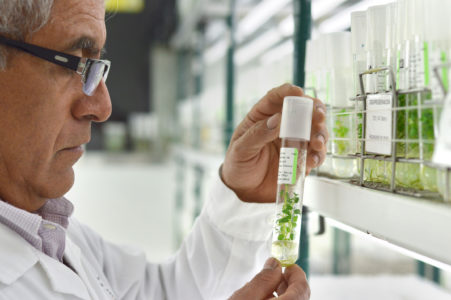
A workshop held at the International Potato Center (CIP) in Lima, Peru brought together researchers and Peruvian government officials in an effort to facilitate compliance with national laws governing access to biological diversity, which is the basis of much of CIP’s research. Since CIP was founded in 1971, its scientists have worked to preserve, study, and tap the potential of root and tuber crop diversity for improving food security, nutrition and smallholder incomes. But over the years, treaties and regulations created to protect biodiversity and ensure national sovereignty over it have come to regulate CIP’s use of some root and tuber crops, crop wild relatives and pest species. This process began with the signing of the UN Convention on Biological Diversity, in 1992 and led to the establishment of national regulations in Peru in 2009 that require permits for collecting, studying, or otherwise utilizing cultivated or wild species. While many countries have such regulations, Peru’s case is of special importance for CIP because the country holds the world’s greatest diversity of potato and its wild relatives, an array of other root and tuber crops, and pests and diseases that attack them; and CIP scientists conduct a significant amount of research on those species. In an effort to facilitate compliance with and improve researchers’ knowledge of regulations governing access to Peru’s biodiversity, CIP’s legal office organized a workshop on ‘Regulations for Accessing Peruvian Genetic Resources,’ held at CIP Lima on March 27. The one-day event brought together researchers from CIP and other CGIAR Centers with representatives of four Peruvian government institutions.
Watch the workshop presentations:
“We want to protect Peru’s biological diversity, but at the same time we want to enable scientific research,” said Selim Guvener, CIP General Counsel, who helped organize the workshop. Guvener observed that it takes CIP an average of 14 months to attain biodiversity access permits, which are required for an array of research activities, adding that this is in part due to insufficient knowledge of the permitting process within CIP. He organized the workshop with the aim of improving researchers’ understanding of the national regulations governing access to biodiversity and to facilitate compliance with them through better communication with the authorities. “If there isn’t communication, then regulations can become an obstacle for researchers,” he said. The workshop began with presentations by authorities from Peru’s Ministry of the Environment, National Forest and Wildlife Authority, National Institute for the Defense of Free Competition and Protection of Intellectual Property, and the National Agricultural Innovation Institute (INIA for its name in Spanish), each of which was followed by a question and answer session. In the afternoon, participants worked through a series of real or potential cases for which permits are required, to gain a better understanding of the process for attaining them. Roger Becerra, a Genetic Resources Specialist who represented INIA in the workshop, said that he was happy to have an opportunity to discuss the intricacies of national regulations governing access to genetic resources with researchers and the other panelists. “This is a good opportunity to exchange ideas with the other government authorities and CIP scientists about the regulations and ways to improve their implementation,” he said. Becerra added that he hopes the event marks the beginning of more fluid communication between government authorities and researchers at CIP and other institutions. “It is important for the country that there is a proper use of genetic resources and that, at the same time, we promote research,” Becerra said.
